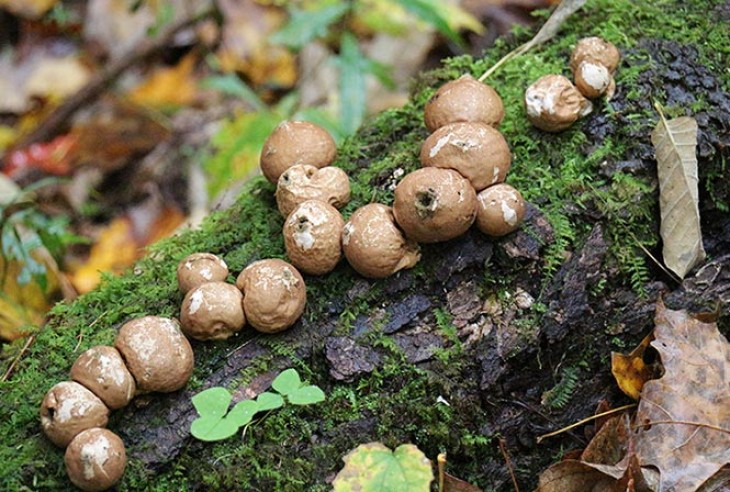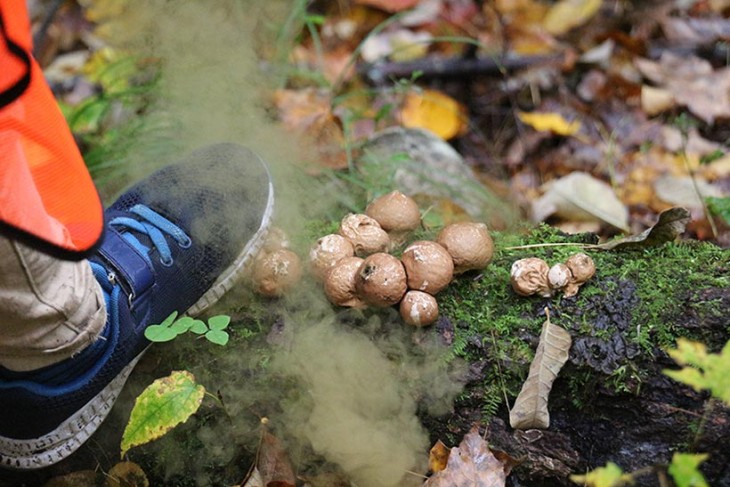This autumn seems an especially good one for mushrooms. Our September Reader Photo Gallery includes a number of fungi photos, and a one mile walk in my family woodlot this past Sunday revealed over thirty species – purple corals and flimsy white parasols, tea cups and hunter’s-orange jellies that glowed like stained glass.
Pear-shaped puffballs, Lycoperdon pyriforme, are one of the few mushrooms I can reliably identify – they grow on dead or dying wood, and they often cluster at the base of snags. I’m not proud of it, but several years ago I delivered a sack of these billion-spore bombs to an elementary school, along with an inadequate explanation to the teacher; reports came home of boisterous stomping and yellow stains on the classroom carpet.
Fungi are remarkably genetically diverse, yet many mushroom-producing species follow a basic pattern for growth. Knots on the mycelium (the more enduring, root-like part of the fungus) develop into tiny knobs called primordia, some of which continue to mature into fruiting bodies. In the presence of moisture, the cells of these bodies swell. It’s this sudden engorgement, along with rapid growth, that makes mushrooms pop up after rain.
If you’d like a field guide for your own mushroom treasure hunt, I recommend Fascinating Fungi of New England, written by Lawrence Millman and illustrated by Rick Kollath. It’s not a comprehensive book, but it’s light to carry, and it’s great for a rookie like me who’s still learning basic types. Kollack’s drawings are beautiful, and Millman has fun with species descriptions. For example, black trumpet “seems to mingle apricots with perfume from a lady’s boudoir.” As for puffballs, Millman gleefully notes that their genus name, Lycorperdon, refers to wolf flatulence.
This last revelation has salved my conscience somewhat about my sins against the first grade teacher. Yes, I provided the students with puffballs and polluted the classroom. But at least I didn’t teach them Latin.





Discussion *